IN THE MYSTERY CAVE (1)
By:
June 15, 2023
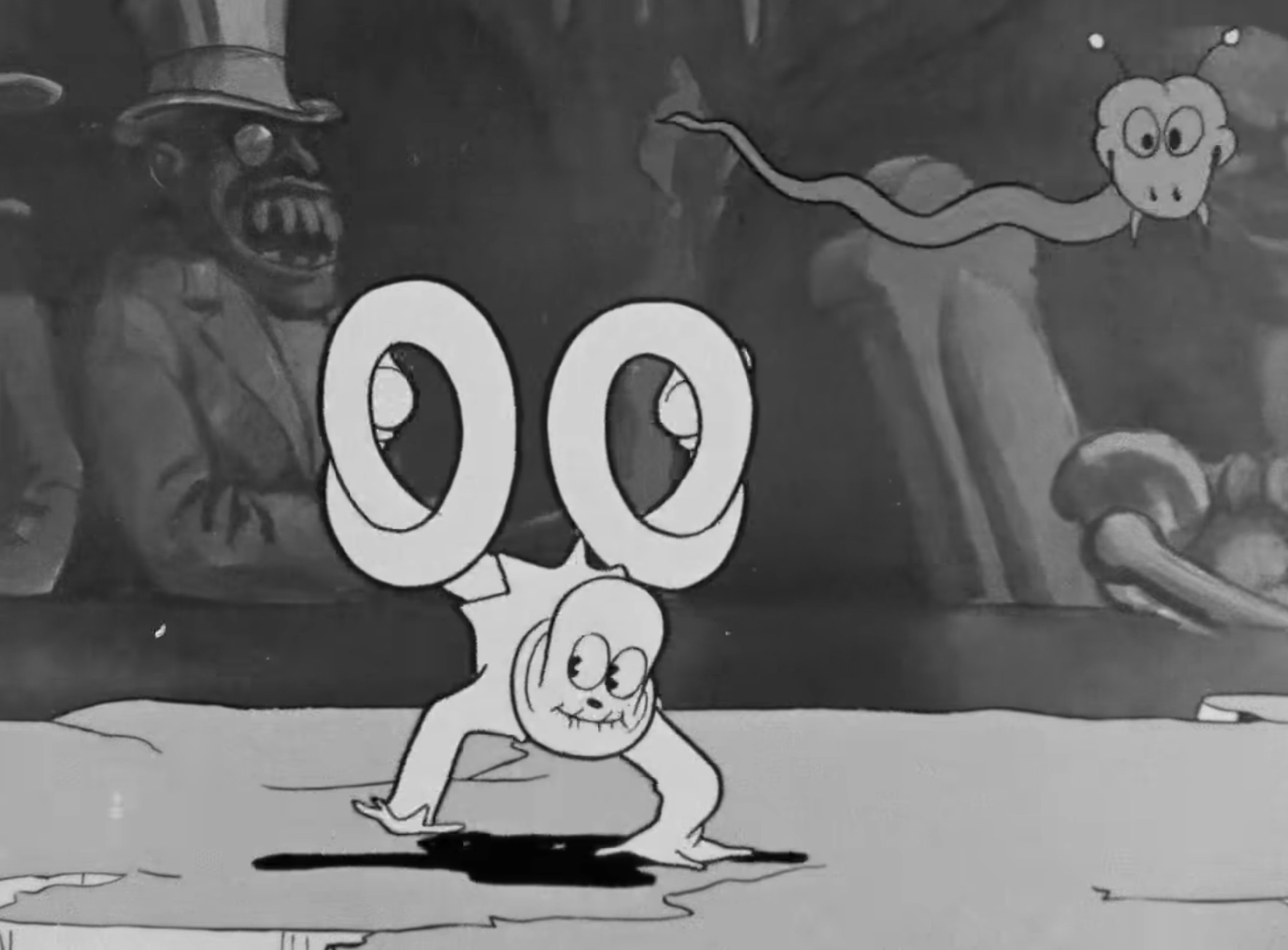
One in a three-part series, by HILOBROW friend Colin Dickey, on Betty Boop in Snow-White, Twin Peaks, and the erotic life of things.
For E.H.
A wooden sign at a slight angle, as though the post it’s nailed to has been driven into unsteady soil. A single plank of wood that reads MYSTERY CAVE, one side of it an unfinished, ragged edge that suggests a finger, as if pointing: that way. A sign that tells us we are about to enter a different kind of place. Not unlike a ring of twelve young sycamore trees in a forest, at the center of which is a rocky pool containing a black substance that “smells of scorched oil.” But in the case of these two stories — the 1933 animated short Snow-White (also known as Betty Boop in Snow-White) and Twin Peaks — the question is not just what happens once one crosses the threshold, into the Mystery Cave or into the Black Lodge, but what may follow you out.
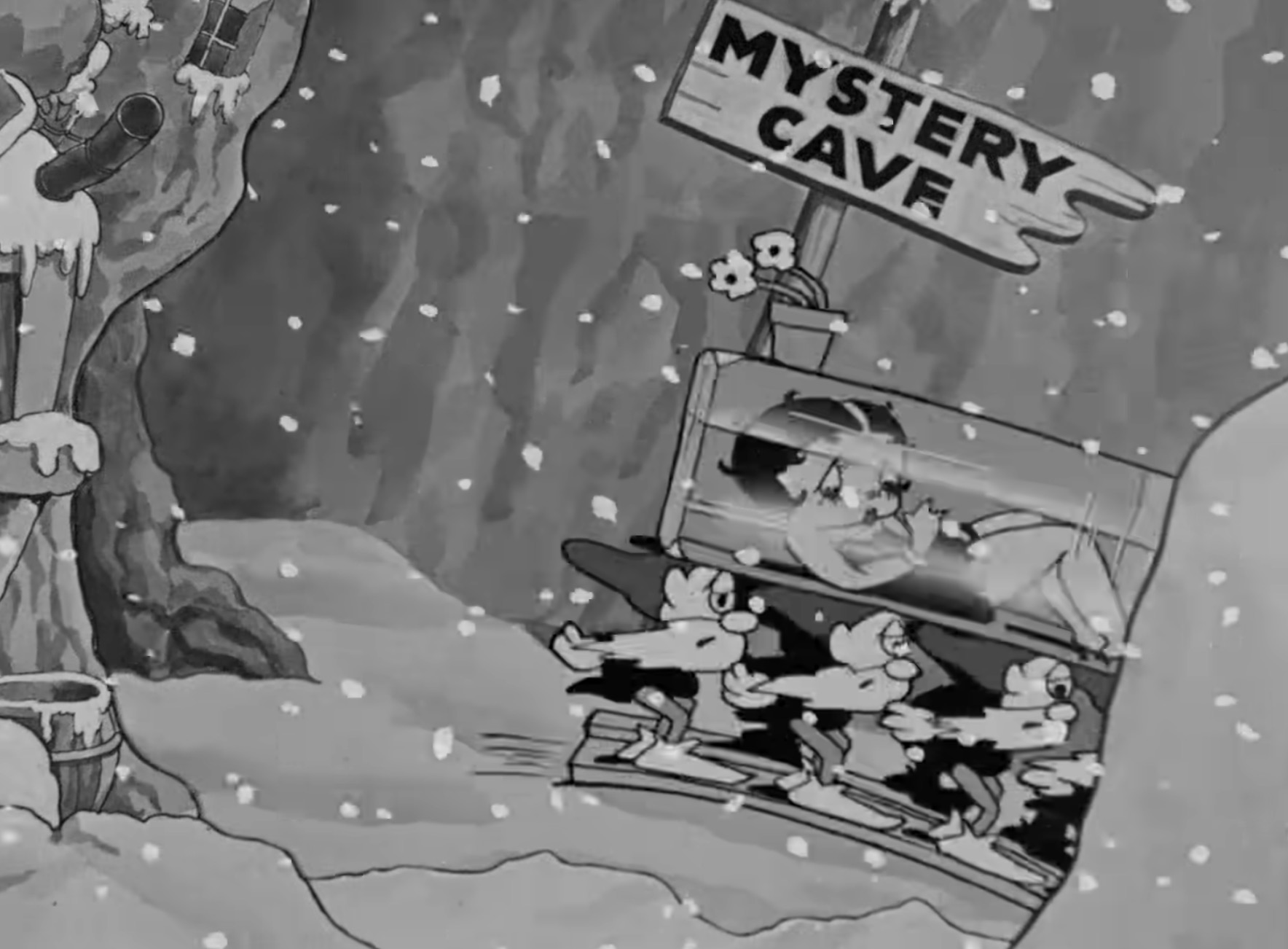
Ostensibly, Max Fleischer’s Snow-White is a retelling of the classic fairytale starring Betty Boop. It’s one of those rare films that’s an acknowledged classic while somehow remaining obscure. The fourth animated short to be chosen for preservation in the National Film Registry, signifying its “historical, cultural and aesthetic contributions” to the history of cinema, it is regularly listed as a milestone of cinema and animation. And yet, not much has been written about it, and much of what has been written about it is inaccurate.
The story is mostly straightforward: Betty Boop goes to visit her wicked “stepmama,” who, jealous of her beauty, tells henchmen Bimbo and Koko to execute her. Moved to pity, they refuse but, through a series of pratfalls, Betty is encased in a coffin of ice and taken, by the Seven Dwarves, into the Mystery Cave — where Koko emerges, transforms into a ghost, and sings “St. James Infirmary” before the film’s happily-ever-after resolution. The film has all the beats of the original Grimms’ fairytale, but the plot is the least interesting aspect of what’s unfolding here. It’s closer in style to the films of David Cronenberg or David Lynch — something here is wrong, but that something is rarely identifiable outright.

Snow-White is the second of three films often treated as a trilogy of sorts: Minnie the Moocher, which premiered in 1932 (a year before Snow-White), and The Old Man in the Mountain, which was also released in 1933. All three feature a rotoscoped Cab Calloway as a central figure; in both Snow-White and Minnie the Moocher, Calloway’s figure is ghostly, and in all three his appearance takes place in a cave of some kind. Because of these commonalities, they are usually discussed as being more or less identical. In Minnie the Moocher, Betty is living at home but is treated poorly by her parents; she sings a pathetic song, and then decides to run away with her boyfriend Bimbo. In the big city, they enter a dark cave where Calloway appears as a spectral walrus, accompanied by a troop of phantoms, who terrify Betty and Bimbo while Calloway sings “Minnie the Moocher.” After the song ends, a terrified Betty runs back home to her parents, affirming that there’s no place like home.
The structure and content of Minnie the Moocher are conservative, perhaps even reactionary: unhappy at home, Betty goes out into a dangerous world where she meets terrifying figures who are obviously coded as Black — afraid for her life, she runs back to the safety of her suburban home, where she is reconciled with her family. But while it’s conservative in nature, it’s also obvious that the film’s primary selling point — the thing we’re most drawn to — is the Mystery Cave itself. The narrative is structured around getting Betty there, and, once there, the film unfolds a phantasmagoria of music and dance. Titillating and transgressive, we’re given a glimpse of another world entirely, before being reminded that such spaces are largely taboo.
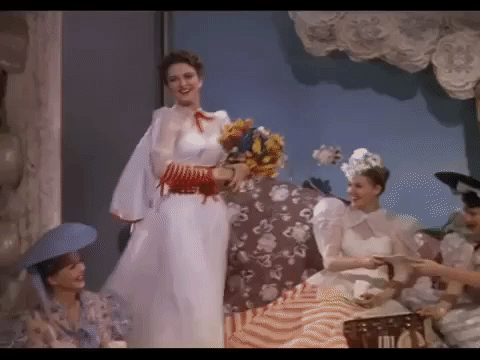
Minnie the Moocher is by no means the only narrative that is built around the introduction of a Mystery Cave. This is a recurring feature in many films: a set piece that appears in the film that almost always appears, on some level, as an interruption in the flow of the narrative, in which an excessive libidinal energy is given free rein. This is often sexual in nature, or at least suggestive of it — the volleyball sequence in Top Gun, for example — but it need not be explicitly sexual in nature. In George Cukor’s 1939’s screwball comedy The Women, it takes the form of a fashion show: though the film is in black and white and punctuated by fast-flowing dialogue between its sharp-witted protagonists, midway through there is a sudden break: the characters attend a fashion show, and the narrative grinds to a halt as a Technicolor sequence shows the entire fashion show. There is no narrative need for this, but it offers a sudden and explosive libidinal energy to break through the structure of the narrative.
In 2018, British critic Peter Bradshaw said of The Women’s fashion show that he could “only compare it to the nightmare in Alfred Hitchcock’s Spellbound.” And indeed, most often in films, this detour into the Mystery Cave takes the form of a dream sequence: an interruption in the plot which is often of limited narrative or thematic value, but allows for a free play of ideas, images, and emotions.
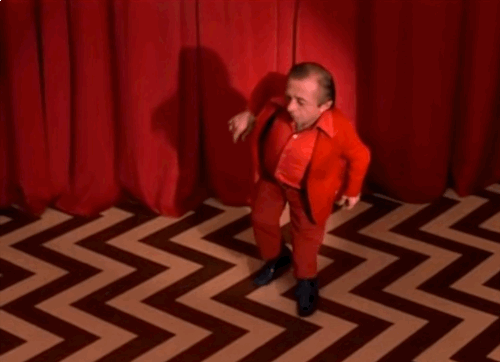
At the end of episode three of Twin Peaks, Agent Cooper falls asleep and has a spectacular dream in which he sees a series of strange figures. They recite strange poetry, make vague threats, offer cryptic clues. At one point Cooper finds himself sitting in a room with red curtains for walls, a black and white zigzag tile floor, with a small man in a red suit and Laura Palmer. “She’s my cousin,” the man tells Cooper. “But doesn’t she look almost exactly like Laura Palmer?” This is a quintessential example of the Mystery Cave in an otherwise narrative and straightforward work — it is a sudden break from the tone and plot, and is couched in a dream sequence so that its inner workings need not be explained. It is a place topographically defined: a red room where some characters seem to live permanently, and where others can find themselves under certain circumstances, cordoned off from the rest of the world. It is a place where a mix of non sequiturs and cryptic utterings are infused with sex and longing. It immediately became one of the most indelible images of Twin Peaks.
With Minnie the Moocher, Snow-White, and The Old Man of the Mountain, these sequences takes place in a literal cave, which becomes the liminal space where this libidinal energy is given free rein. And because of the similarities, critics tend to conflate these sequences as identical in meaning. Writing of the Betty Boop films, Tanine Allison comments that all three present “the space in which Calloway appears, usually a dark cave, as an alluring draw to Betty, but ultimately it is dangerous and frightening, driving her to return to a familiar space.” As Christopher P. Lehman explains, “These African American performers and the surreal dwellings of their caricatures in the ‘Betty Boop’ series represents an ‘other’ that provides an appealing sense of liberation for whites but contains a threat of miscegenation via Betty’s presence in their part of town.”
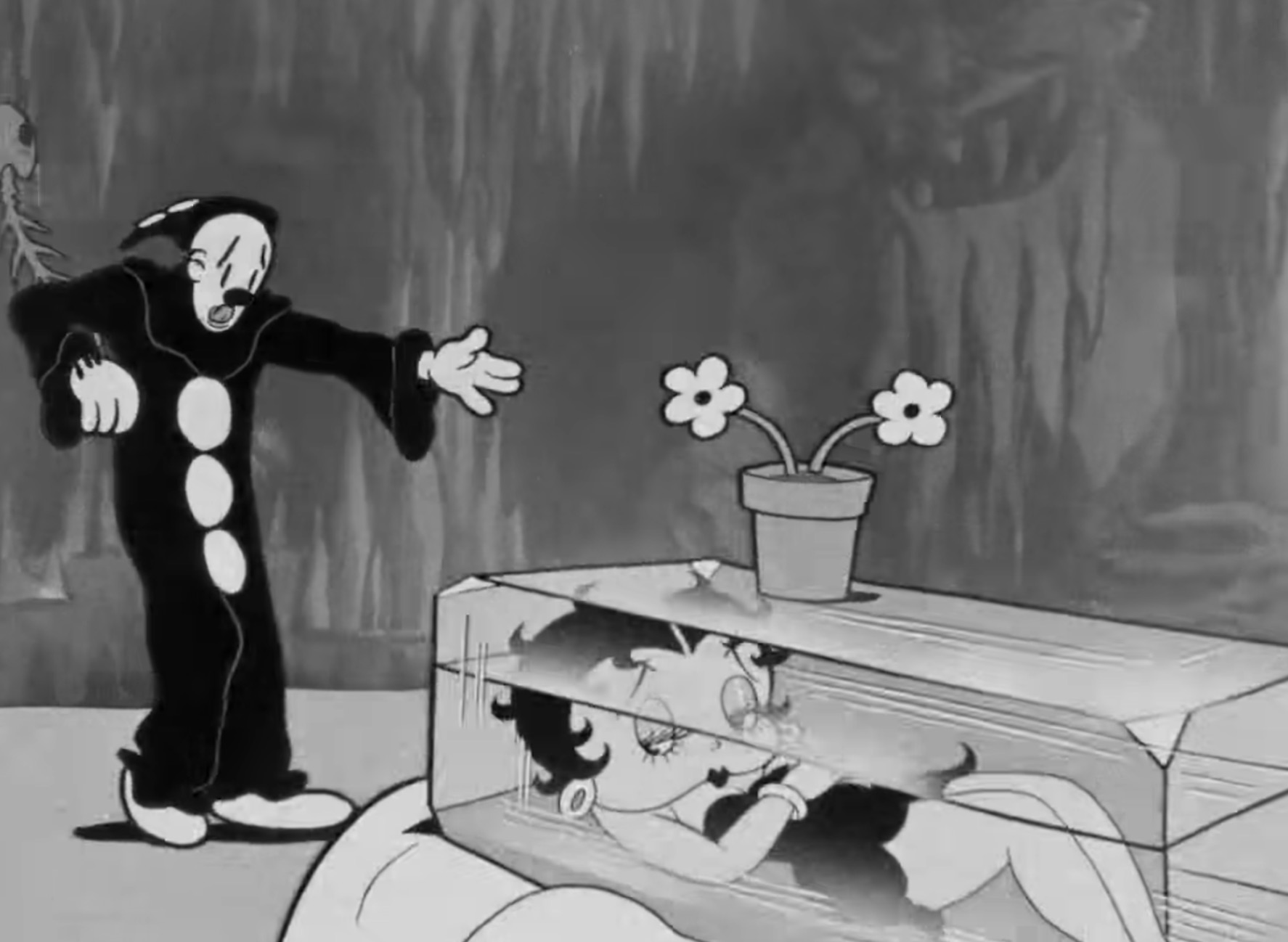
But while this reading is true to Minnie the Moocher, it fails to capture what’s actually happening in Snow-White. Boop’s entrance to the Mystery Cave isn’t a result of her leaving the safety of home, nor is her deliverance from it an occasion to reaffirm some moral values. She is not even menaced in the cave at all. Instead, the threat is in the home itself: the wicked stepmother who orders her death. Tied to a tree and sentenced to death, her executioners, Bimbo and Koko, can’t bear to go through with it, so destroy their axes and throw them down a hole, one that takes them with the weapons. The tree Betty is tied to sets her free out of pity, and she pratfalls into a snowball, which is then sheered into a glass coffin that slides into the Seven Dwarves’ treehouse — they then escort her into the Mystery Cave, where Betty, seemingly dead in an ice coffin, is serenaded to by the Cab Calloway ghost.
This is an entirely different mechanism for her arrival in the cave, one in which she is mostly passive and inert or silent figures simply deliver her there. This further separates Snow-White from the earlier film, and from a great number of other narratives: the way that the libidinal energy of the film overflows the liminal space of the Mystery Cave. For it is not just in the dreamworld confines of the cave that things come alive: throughout the entire film, objects gyrate, details pulse, and the world moves in a strange and uncontrollable way.
IN THE MYSTERY CAVE: PART 1 | PART 2 | PART 3.
MORE COLIN DICKEY at HILOBROW: KAIROS (Hermenautic Tarot series) | ANIMAL MAGNETISM (cross-posted series) | WIDESPREAD PANIC (Grok My Enthusiasm series) | ACÉPHALE (#Squadgoals series).
